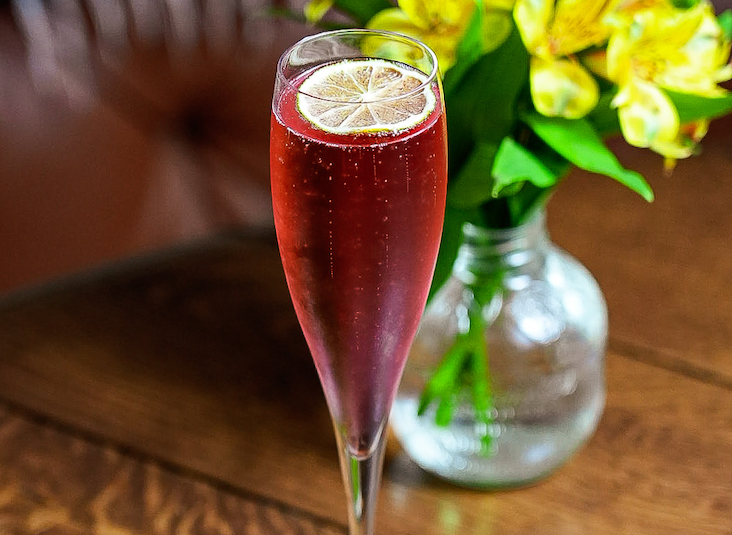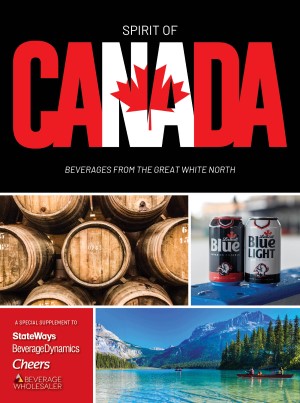As the old song goes, ‘I don’t want to set the world on fire, I just want to start a flame in your heart.’
There’s a similar refrain that goes along with low-carb foods and beverages as 2005 opens. Like so many trends, low-carb has finally begun to cool down after a long run. But it’s not going to disappear.
Instead, it leaves behind a legacy a sizable group of people who remain committed to consuming fewer carbs. Operators must continue to cater to them from now on which means ongoing opportunity, especially for wine, spirits and beer sales.
Indeed, research indicates that Americans are showing signs of finding the golden mean in their eating habits. According to Harry Balzer, vice president of NPD Group, in the 19th Annual Report on Eating Patterns in America, “It appears that Americans are beginning to find a balance between the need for convenient, inexpensive meals and their expanding waistlines.”
But other industry observers are more cautious on the low-carb craze.
“It seems the whole low-carb phenomenon is kind of on the wane,” says David Henkes, principal and executive director of the Adult Beverage Insights Group for Chicago-based Technomic, Inc. “We’re seeing that in food as well as in beverages, where the interest seemed to peak probably six to eight months ago when everybody was jumping on the bandwagon. Now it seems consumers have kind of gotten over (it). That’s not to say it won’t exist as a niche phenomenon for certain people who believe in that type of diet. But as sort of a mainstream dietary consumption pattern, low-carb really seems to have fallen off the face of the earth.”
HAS LOW-CARB PEAKED?“In general, the low-carb trend has plateaued,” agrees Anishka Clarke, beverage & tobacco analyst for Standard & Poor’s. “It’s still something that food and beverage manufacturers are aware of and taking into account with their products and future marketing plans, though. When it comes specifically to spirits and wines, we see companies taking advantage of some of the positive aspects of the spirits. For example, the fact that they may have zero carbohydrate content, and that their labeling can now (include) that they have zero carb content. I believe they will take advantage of that fact.”
However, operations that don’t usually latch on to trends have been largely unaffected by the low-carb craze. For example, it has never resonated at Manhattan’s venerable landmark, The ’21’ Club, according to wine/beverage director Chris Shipley.
“We literally don’t have any low-carb wine here at all,” he notes. “I have a couple of bottles of no-alcohol wines, which I guess would be low-carb, but they’re just here because once every two years somebody requests a bottle. We’re not what you would call a trendy place. Because of our clientele, we don’t market our spirits to them. When the CEO of Time-Warner comes in and orders a Tanqueray & tonic we don’t say, ‘Well, have you tried this?’ We say, ‘Yes, sir.'”
LOW-CARB VS. LIGHT BEERSAre low-carb beers taking business away from light beers? “It’s hard to say,” says Yuri Kato, publisher of www.CocktailTimes.com. Kato notes that low-carb cocktail ideas and the zero-carb spirits facts are not as widely distributed as low-carb light beer. “Because beer advertising can appear in major broadcasting networks, unlike distilled spirits products, I think it makes it difficult for distilled spirits companies to compete at the same level.”
Fortunately for the spirits industry, Kato adds, “[The] revival of cocktail culture is certainly big today. So within the cocktail-drinking society, I think that the zero-carb spirits awareness has been increased over the last few years.”
Henkes believes low-carb beers are, indeed, taking away from light sales. “What you’re seeing is that some of the beer companies now are trying to position their light beers as low-carb alternatives. From the manufacturer’s perspective, if they can take a product that already exists and market it differently to appeal to a new group of people, in this case low-carb consumers, that’s better for them.”
The opportunity for spirits, wine and beer suppliers is clear.
White wines have about 1.5 grams of carbohydrates per serving, and red wines about 3.0 grams. Light beers such as Michelob Ultra have 2.6 grams, while on the high end, brands like Budweiser, Miller Genuine Draft and the like have approximately 10 grams per serving, according to Standard & Poor’s.
“Today we all know at least a few people who’re on low-carb diets,” says Kato. “I think people realize what we drink is as important as what we eat. There is simply a great demand by the consumers for low-carb drinks, and low-carb anything.”
Aside from the profitability of low-carb drinks, Kato reasons, the trend also gives the industry “an opportunity to educate consumers about distilled spirits. People know that beer contains higher carb (content) than wine or spirits, but not a lot of people know that the majority of distilled spirits contains zero carbs.”
LOW-CARB LABELINGA ruling issued by the Alcohol and Tobacco Tax and Trade Bureau (TTB) last April, said that the term “low-carbohydrate” could be used in the labeling and advertising of alcoholic beverages containing no more than seven grams of carbohydrates per serving. The ruling prohibits false, misleading or implied statements that consumption of low-carb alcohol may play a role in maintaining a healthy weight or weight reduction.
Standard & Poor’s stated soon after the new ruling that it expects spirits and wine manufacturers to take advantage of it, as beer companies had already done. In an industry survey published in early September 2004, S&P’s noted that “spirits companies, whose products for the most part have no carbohydrates, can devote additional resources entirely to marketing without having to invest in reformulating. Similarly, wine companies can also take advantage.”
In April, Diageo Chateau and Estate Wines (DC&E) announced that three of its wine brands BV Coastal Estates, Sterling Vintner’s Collection and a new brand offering, Century Cellars all meet the definition of a “low-carb” alcohol beverage as recently established by the TTB.
DC&E began producing point-of-sale materials informing consumers that the three brands met the new TTB guidelines. Also included in the information are other macro-nutritional inforfacts such as fat, protein, calories and serving size. For example, materials for BV Coastal Estates 2002 Chardonnay include the fact that the wine contains 3 grams of carbohydrates, 124 calories, 0 grams of fat and less than 1 gram of protein per five-ounce serving.
“We have not developed any specific products that are low-carb,” notes Zsoka McDonald, director of media relations for Diageo North America. “We have been educating consumers about the low-carb nature of some of our products. We did an educational campaign across several of our spirits brands last year. There were some events around the Super Bowl, and a bit of advertising about the low-carb nature of some of our products like Tanqueray, Smirnoff, Cuervo, Crown Royal, and Johnnie Walker.”
The firm’s research shows that consumers “want to know what is in the food and beverages they are consuming in general,” says McDonald. “Consumers are more concerned about carbs and other macro nutrients. So we’ve actually gone a step further and supported some of the consumer groups that have called for labeling on alcoholic beverages.”
NEED TO KNOWConsumers need more education about lower carbs in spirits. According to a survey conducted by Ipsos Public Affairs, a leading global survey-based market research group working on behalf of Diageo, 63 percent of Americans did not know that spirits like vodka, tequila, gin and whisky are lower in carbs than wine and beer. These spirits, according to Guy Smith, Diageo’s executive vice president, “have no carbs.”
Last July, the casual themed chain TGI Friday’s added five new low-carb items to its Atkins-approved menu — as well as a low-carb chardonnay and merlot in more than 530 restaurants across the U.S.
Brown-Forman offers low-carb wines called One.6 Chardonnay and One.9 Merlot, named after the number of carbohydrates per five-ounce serving. Both wines are produced by California-based StonyBrook Vineyards. The One.6 Chardonnay is light-bodied, fresh and crisp with a hint of melon and citrus fruits. The One.9 Merlot is smooth and medium-bodied with flavors of cherry, blackberry and traces of oak.
WINES: CARB COUNTS VARYAccording to Stewart Slocum, beverage marketing director for Friday’s, low-carb wines are produced from blends that are naturally lower in carbohydrates. “There is a lot of variation in the carbohydrate levels from different regions and even from microclimate to microclimate,” explains Slocum. “One.6 Chardonnay and One.9 Merlot are the result of a meticulous review of wine blends from different regions, and each tastes as good as any premium wine.”
Each wine is served in a six-ounce glass at a price point in line with the other offerings on the TGI Friday’s wine list. A six-ounce serving of the One.6 Chardonnay has 1.9 grams of carbohydrates and a six-ounce serving of the One.9 Merlot has 2.2 grams of carbohydrates.
“It’s one of those no-brainers. When there are other (brands) doing exceptionally well, wine should be participating as strongly,” says Andrew Varga, global brand director at Brown-Forman Wines. B-F, perhaps best known for Jack Daniel’s whiskey, owns several wine brands including Fetzer and Bolla, and markets others including Korbel and Michel Picard.
Brown-Forman’s low-carb idea was hatched before last fall’s harvest. Winemaker Cara Morrison crafted the wines by choosing the right varietals and “fermenting them as dry as you can” to cut the sugar, Varga says. One.6 and One.9 wines are available throughout the U.S., and reports say that more than 200,000 cases were sold in less than a two-week-period.
LOW-CARB AD CAMPAIGNOne.6 and One.9 wines are being supported with an initial $5 million advertising campaign that is strongly focused on the consumer, as well as promotional activities and materials. The campaign is built on the idea that the only thing drinkers are missing is carbs. The message: “Life is full of compromises. This isn’t one of them.” Print advertisements will appear in USA Today, Wall Street Journal, L.A. Times, and The New York Times, as well as other periodicals.
The marketing plan has been called “brilliant” by food and beverage expert Phil Lempert, a self-proclaimed “supermarket guru.” He says, “They are not focusing on low-carb but instead on the number. This is simple and smart. It’s very smart to name your product with a number so people instantly get it.”
Operators are doing themselves a major disservice if they think the low-carb trend is going to go away. It’s not. With an estimated 59 million Americans watching their carbohydrate intake, ACNielsen reports that more than 17 percent of the nation’s households have at least one person following a low-carb diet. Sales of all low-carb products exceeded $15 billion in 2003, and estimates for 2004 indicated that sales were expected to reach $30 billion.
“There is no question that there are an estimated 59 million to 70 million consumers who are participating in low-carb diets in some form or fashion,” says Varga. “We’ve seen phenomenal success in the beer business with Michelob Ultra, and we wanted to capture whatever segment that would translate to in the wine business.” The company is working hard to induce on-premise trial by-the-glass.
Standard & Poor’s Clarke believes that wines and spirits marketed as low-carb “will find a small niche. I’m not so sure it will be their most successful product to date. I think, however, it will have some takeaway at retail.”
In short, low-carb wines, spirits and beer are apparently not going to set the world on fire. They should continue, however, to go on stirring flames in consumers’ hearts.




